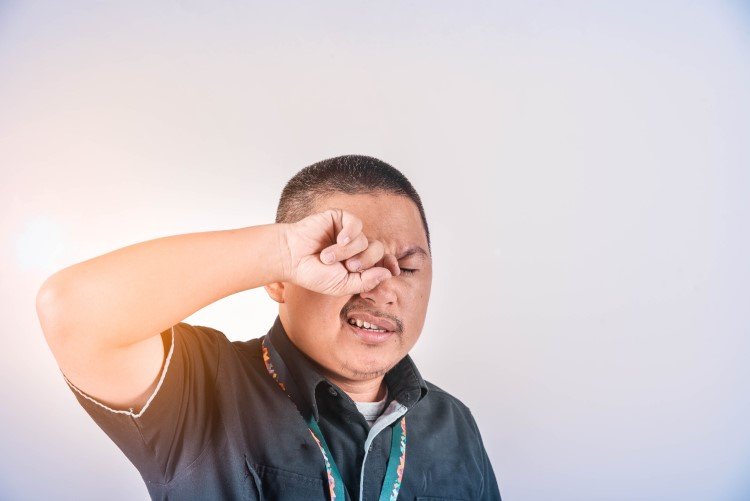8 Ways to Recover from Zoom Burnout
Our computer and phone screens have gotten us through the pandemic. We have been able to go to school, work, see doctors, go shopping, entertain ourselves, and socialize (to some extent) through our devices. But spending so much time in front of a screen is also leading to major Zoom burnout. How do we get through the last few months of pandemic learning when we are so burned out?
Being on our screens all the time is leading to Zoom burnout.
What is Zoom burnout?
“Burnout” is a state of feeling exhausted, empty, and unable to cope with chronic stress. “Zoom burnout” is a new phrase that is being used to describe the uniquely draining stress of being on screens all day, every day.
Are you always tired, feel apathetic to school, and struggle to finish homework? You may be experiencing Zoom burnout. Spring break can offer only a temporary break from our computers. We need regular ways to renew ourselves throughout each day.
This article explains how screens tire you out physically, mentally, and emotionally. By understanding the sources of Zoom burnout, we can find ways to reduce the drawbacks of screens. We follow up with a list of 8 ways you can start to recover from Zoom burnout.
What causes Zoom burnout?
Screens are Physically Tiring
Looking at screens too much can lead to eye strain. Digital text can be harder on our eyes than a printed book due to blurred screens or low contrast lighting. Our eyes must also adjust to glare, reflection, and light flickers.
Our eyes aren’t the only part of our bodies that get tired out from screens. Teachers often require us to face our cameras directly for Zoom classes and meetings. Over time, we can start to feel stiff in our necks, shoulders, and back. This is unnatural. Students typically sit, stand, and walk around throughout the regular school day.
Eyes, necks, shoulders, and backs can suffer with too much screen time.
Screens are Mentally Draining
Zoom classes need much more focus than a face-to-face, in-person class. Our brains are constantly multitasking when we are online. Teachers, classmates, screen-shared texts, images, incoming messages, pop-up links, and distracting app icons share the screen. Students must engage with the actual school subject, even with all that visual noise. Research has shown that multitasking hurts your productivity and even your brain functioning. According to Stanford researcher Clifford Nass, chronic multitaskers actually impair their cognitive processes.
Online communication is also harder for our brains. Scientists have been studying how hard it is to process nonverbal cues through Zoom. We might not be conscious of it, but our brains are always trying to interpret nonverbal cues. These would include body language, shared eye gaze, and other social cues like touch. Automatic nonverbal cues shape how humans communicate, bond, and feel comfortable with others. For example, if your friend is staring at something, you might follow their gaze to understand what is so interesting. Or, for example, if someone stands a little too close to you, you might take a step back to feel more comfortable.
However, our brains can’t really find these cues when looking at rows of little Zoom boxes on our screens. Then add technical problems like a frozen screen or an auditory lag. It is no wonder our brains feel overloaded.
Our brains work harder to process information and communication cues through screens.
Zoom is Emotionally Stressful
Zoom life is uncomfortable. We’ve blurred the lines that normally separate private from public, leisure from work, and friend from a stranger. Boundaries help us feel safe. We can better enforce boundaries when home, school, and work happen in separate spaces. During quarantine though, all of our social identities play out in the same spot. Classmates and teachers we might not invite over can now Zoom into our private rooms. We might not be comfortable with seeing everyone’s faces all the time, looking back at us. Many of us get distracted and then self-conscious when seeing our own faces on the screen. Losing those boundaries adds to the overall stress of surviving a global pandemic.
How to Avoid Zoom Burnout
1. 20-20-20-Rule.
Many eye doctors recommend the 20-20-20 rule. After 20 minutes of screen time, take 20 seconds to look at something 20 feet away. This gives your eyes a much-needed break. Even better, take those 20 seconds to stand up, stretch, and drink some water.
2. Adjust your screen settings.
Generally, eyes prefer larger black text over a white or off-white background. You can adjust the brightness of your screen to match your study environment - nothing too bright or too dim. You can also adjust the color settings. A free program like F.lux will make your screen color “warmer” in the evening. Inexpensive blue light glasses can help. They claim to filter certain wavelengths of light that strain our eyes.
3. Go off-screen as much as possible.
If you have the option, try printing out material to work with instead of reading it off your screen. If you are writing, consider the dictation option. The dictation option is usually a microphone button on your phone and computer. You can literally close your eyes, talk out loud, and let the software type for you. The transcription is not perfect so you will have to edit your words later. Still, dictation can help with first drafts, to-do lists, and notes.
4. Clean up your “workspace.”
Try to minimize anything that will push your brain into multi-tasking. Windows’ Focus Assist and Mac’s Do Not Disturb modes can silence notifications for a set period of time. Consider adding programs that can temporarily block or limit distracting websites and apps. There are multiple free browser extensions like LeechBlock, BlockSite, or StayFocusd. Of course, there are paid apps such as Freedom that work across all your devices.
Catch up with friends with a phone call - not a video call.
5. Call someone.
Instead of catching up with friends through a video chat, an old-fashioned voice phone call might give your brain a reset. We can socialize without making our brains search for non-verbal cues. It will be easier for our bodies to stretch, walk around, lie down, and so on.
6. Focus on self-care.
Eating a healthy diet, getting exercise, going outdoors, and bettering sleep habits should be at the top of your priority list. Our bodies need balance and time away from sedentary screen time.
7. Check your options.
Many teachers need cameras on for ZOOM classes to take role and check on student engagement. Plus, it may be uncomfortable for them to talk to “no one” on screen. But if ZOOM burnout is deeply affecting your school work, reach out to your teacher. There may be ways to show your engagement without having your screen on all the time.
8. Talk to a mental health professional.
Burnout is usually related to our work so changing our working environment can help. However, we can also fortify ourselves with tools to manage the anxiety and stress of pandemic life.
Burnout can lead to, or be mistaken for, depression. Depression will make you feel exhausted and apathetic too. It also includes low self-esteem, hopelessness, and acts or thoughts of self-harm. Please talk to your doctor or a mental health professional if you are depressed.
If you are having suicidal thoughts, contact the National Suicide Prevention Lifeline at 1-800-273-8255 to talk to a trained counselor.
Final Thoughts on Zoom Burnout
In a year of uncertainty and stress, you can rely on UPchieve’s qualified tutors to help with homework and studying. Our tutors are always free and available 24/7.




